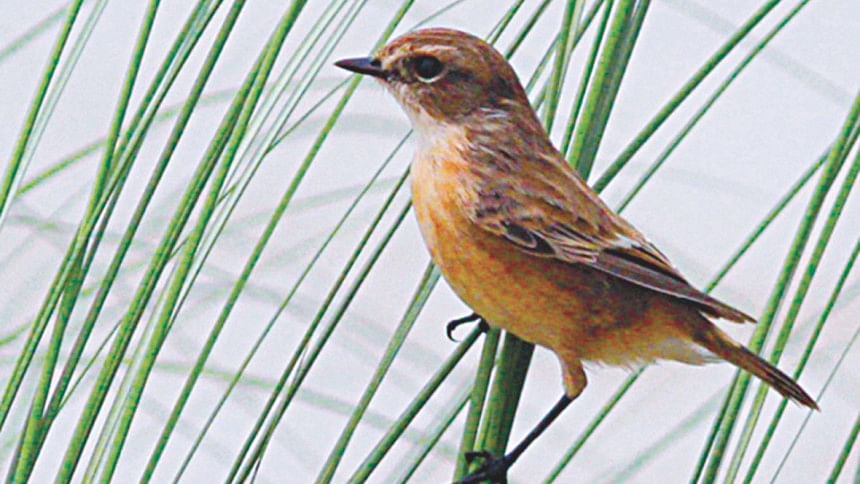Nature Quest: Rare bird seen in Rajshahi

An elusive bird of the rock is now a confirmed resident of Rajshahi. And the name of the bird is "White-tailed Stonechat". Ornithologists named it Saxicola leucurus, meaning white-tailed inhabitant of the rock. Rajshahi is not a rocky place, but many birds of this species are happily living and breeding there.
These cute creatures have built their cup nests on the lowlands of the uninhabited chars in the Padma River. They breed during the monsoon.
According to the Encyclopedia of Flora and Fauna of Bangladesh, the bird is "a vagrant to Bangladesh". The term vagrant is used for birds that are rarely seen. White-tailed Stonechats are now seen every day in the chars of Rajshahi and Chapainawabganj. We presume that the birds have always been living there and unlikely to have emigrated suddenly. It seems more likely that the birds were rarely spotted because the ornithologists visited the chars occasionally.
White-tailed Stonechat is a rare bird. It lives only in four to five countries of East Asia. It is seen in small numbers along the Indus River, in the sub-Himalayan lowlands of northeast India, along the banks of the Padma in Rajshahi and in high altitude wetlands of Manipur and Myanmar.
Chars of Rajshahi and Chapainawabganj are the only place in Bangladesh where the bird exists. These chars are probably the only place on earth where this rare bird can easily be seen. That potentially makes Rajshahi region an attractive place for birdwatchers.
People of Rajshahi, however, are mostly unaware of the existence of this bird there. The uninhabited chars are largely left at the mercy of foragers and squatters. Most of the reed, tamarisk and other shrubs of the chars are cut and carted away to be used as fodder, fuel etc. The vegetation is also burnt at places to clear the land for seasonal cultivation. In the dry season, thousands of cattle graze on the chars. These activities hit the bird as hard as bullets. The survival of the bird depends on the reed and other vegetation of the char.
Destruction of the wild vegetation deprives the bird of its feeding and breeding ground. The bird feeds on the insects thriving among reeds and shrubs. It also nests on the ground under the same vegetation.
To save White-tailed Stonechat and Bristled Grassbird, another rare bird breeding at the same place, from extinction, destruction of shrubs and other vegetation on the chars of Rajshahi region must be stopped. The chars are also important "wintering grounds" for several rare and threatened birds, namely Asian Woolyneck, Black-necked Stork and Painted Stork.

 For all latest news, follow The Daily Star's Google News channel.
For all latest news, follow The Daily Star's Google News channel. 



Comments